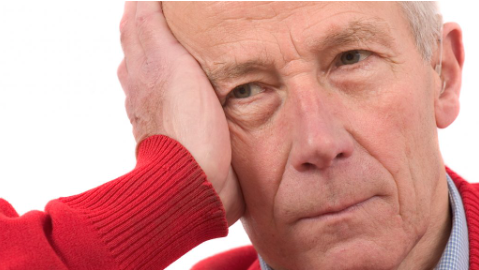Major Depressive Disorder Diagnosis
Major depressive disorder is diagnosed as major disorder, single episode or having recurrent episodes and is also rated in terms of severity such as mild, moderate or severe. It has been part of the DSM diagnostic system used by mental health professionals for many years. It is probably the most often diagnosed disorder by mental health clinicians. The National Institute of Mental Health estimates that 6.7% of the population in the United States suffer from major depressive disorder in any given year. Unfortunately, as reported by the Substance Abuse and Mental Health Services Administration in 2008 only about 64.5% of individuals experiencing major depressive disorder seek treatment.
In order to receive a major depressive disorder diagnosis, you must experience nearly every day (usually all day) either a low mood or lack of interest in your daily activities and interests or both. Additionally, you may experience a loss of appetite, fatigue, problems with sleeping, suicidal ideation, agitation, trouble concentrating, and feelings of excessive guilt. Major depressive disorder can lead to a variety of physical and emotional problems and can be a chronic illness requiring long-term psychotherapy, and/or medical and biological treatments.
Major Depressive Disorder Diagnosis and the Bereavement Exclusion:
An exclusion for bereavement was removed from the DSM-5. Previous editions of the DSM had an exclusion for individuals who experience depression for up to two months after the death of someone of significance. Some individuals criticized the removal of the exclusion stating that the existence of bereavement could pathologize the normal grieving process. However, the American Psychiatric Association concluded that normal grieving frequently occurs without a diagnosis of major depressive disorder.
Basic Features of a Major Depressive Disorder Diagnosis:
A major depressive disorder diagnosis can be given at any age although the prevalence seems to increase often after an individual gets to the age of puberty. First episodes can occur in middle age or even for senior citizens although it seems to peak when individuals are in their early twenties. As previously stated, major depressive disorder can be diagnosed to consist of either a single or recurrent episode. It must consist of at least five of the nine criteria below. It is also important to recognize that these criteria must define a change from the individual’s previously normal level of functioning. The symptoms must continue for at least a two-week period of time. Mental health clinicians need to be very considerate that they do not include symptoms related to another medical condition when diagnosing major depressive disorder.
There are very high mortality rates associated with major depressive disorder. Some estimates have found that as many as 40.3% individuals diagnosed with major depressive disorder have suicidal ideation within a given year and approximate 10.4% actually make an attempt.
Psychologists and mental health clinicians frequently use depression screening and suicide assessment instruments to closely monitor clients with moderate to severe depression symptoms. Occasionally, an individual may require a higher level of care such as hospitalization.
Major Depressive Disorder Diagnosis: Cultural Considerations
It is also very important to understand that there are cultural considerations related to major depressive disorder. It has been found that Latinos may be more susceptible to major depressive disorder especially if they are recent immigrants or they have had trouble acclimating to the new culture. Native Americans seem to have relatively the highest risk of prevalence for major depressive disorder over their entire lifetime. Some studies have found rates as high as 19.17%. The second highest cultural group of individuals with diagnosed major depressive disorder are Caucasian Americans with a rate of approximately 14.58% followed by Latinos at 9.64%, African-Americans at 8.93% and Asian Americans and Pacific Islanders at 8.77%.
It is important to understand that culture affects not only the prevalence rates of the different ethnic groups but also influences their experience of the symptoms, the language that they use to report the symptoms as well as influences their decision whether to seek treatment or not. It may affect every aspect of their diagnosis and care.
Treatment for Major Depressive Disorder:
Most of treatments for major depressive disorder fall within the categories of either psychotherapy or depression medication or in many cases both. Clinical experience seems to indicate that in many cases the optimum treatment may require both psychotherapy and medication management of depression symptoms.
Coding for Major Depressive Disorder:
Major depressive disorder is diagnosed as having either single or recurrent episodes. Also, the severity level such as mild, moderate, severe and with psychotic features are also specified to note the unique aspects of the course of the disorder. Major depressive disorder specific codes can be found on the previous page.
Please see below for specific symptoms for major depressive disorder.
Major Depressive Disorder diagnostic criteria:
A. Five (or more) of the following symptoms have been present during the same 2 week period and represent a change from previous functioning; at least one of the symptoms is either (1) depressed mood or (2) loss of interest or pleasure.
Note: Do not include symptoms that are clearly attributable to another medical condition.
1. Depressed mood most of the day, nearly every day, as indicated by either subjective report (e.g., feels sad, empty, hopeless) or observation made by others e.g., appears tearful). (Note: In children and adolescents, can be irritable mood.)
2. Markedly diminished interest or pleasure in all, or almost all, activities most of the day, nearly every day (as indicated by either subjective account or observation).
3. Significant weight loss when not dieting or weight gain (e.g., A change of more than 5% of body weight in a month), or decrease or increase in appetite nearly every day. (Note: In children, consider failure to make expected weight gain.)
4. Insomnia or hypersomnia nearly every day.
5. Psychomotor agitation or retardation nearly every day (observable by others, not merely subjective feelings of restlessness or being slowed down).
6. Fatigue or loss of energy nearly every day.
7. Feelings of worthlessness or excessive or inappropriate guilt (which may be delusional) nearly every day (not merely self-reproach or guilt about being sick).
8. Diminished ability to think or concentrate, or indecisiveness, nearly every day (either by subjective account or as observed by others).
9. Recurrent thoughts of death (not just fear dying), recurrent suicidal ideation without a specific plan, or suicide attempt or specific plan for committing suicide.
B. The symptoms cause clinically significant distress or impairment in social, occupational, or other important areas of functioning.
C. The episode is not attributable to the physiological effects of a substance or to another medical condition.
Note: Criteria A-C represent a major depressive episode.
Note: Responses to a significant loss (e.g., bereavement, financial ruin, losses from a natural disaster, a serious medical illness or disability) may include the feelings of intense sadness, rumination about the loss, insomnia, poor appetite, and weight loss noted in criteria a, which may resemble a depressive episode. Although such symptoms may be understandable or considered appropriate to the loss, the presence of major depressive episode in addition to normal response to a significant loss should also be carefully considered. This decision inevitably requires the exercise of clinical judgment based on individual’s history and cultural norms for the expression of distress in the context of loss.
D. The occurrence of the major depressive episode is not better explained by seasonal affective disorder, schizophrenia, schizophrenic form disorder, delusional disorder, or other specified and unspecified schizophrenia spectrum and other psychotic disorders.
E. There has never been a manic episode or hypomanic episode.
Note: This exclusion does not apply if all the manic -like or hypomanic-like episodes are substance -induced or are attributable to the physiological effects of another medical condition.
Severity/Course Specifier, Single Episode, Recurrent Episode
Mild 296. 21 (F32.0) 296. 31 (F33.0)
Moderate 296. 22 (F32.1) 296. 32 (F33.1)
Severe 296. 23 (F32.2) 296. 33 (F33.2)
With psychotic features 296. 24 (F32.3) 296. 34 (F 33.3)
In partial remission 296. 25 (F 32.4) 296. 35 (F 33.41)
In full remission 296. 26 (F32.5) 296. 36 (F 33.42)
Unspecified 296.20 (F 32.9) 296.30 (F 33.9)
Specify:
With anxious distress
With mixed features
With melancholic features
With atypical features
With mood congruent psychotic features
With mood-incongruent psychotic features
With catatonia Coding note: Use additional code 293.89 (F06.1).
With peripartum onset
With seasonal pattern
Diagnostic Criterion for Major Depressive Disorder from the Diagnostic and Statistical Manual of Mental Disorders Fifth Edition American Psychological Association




